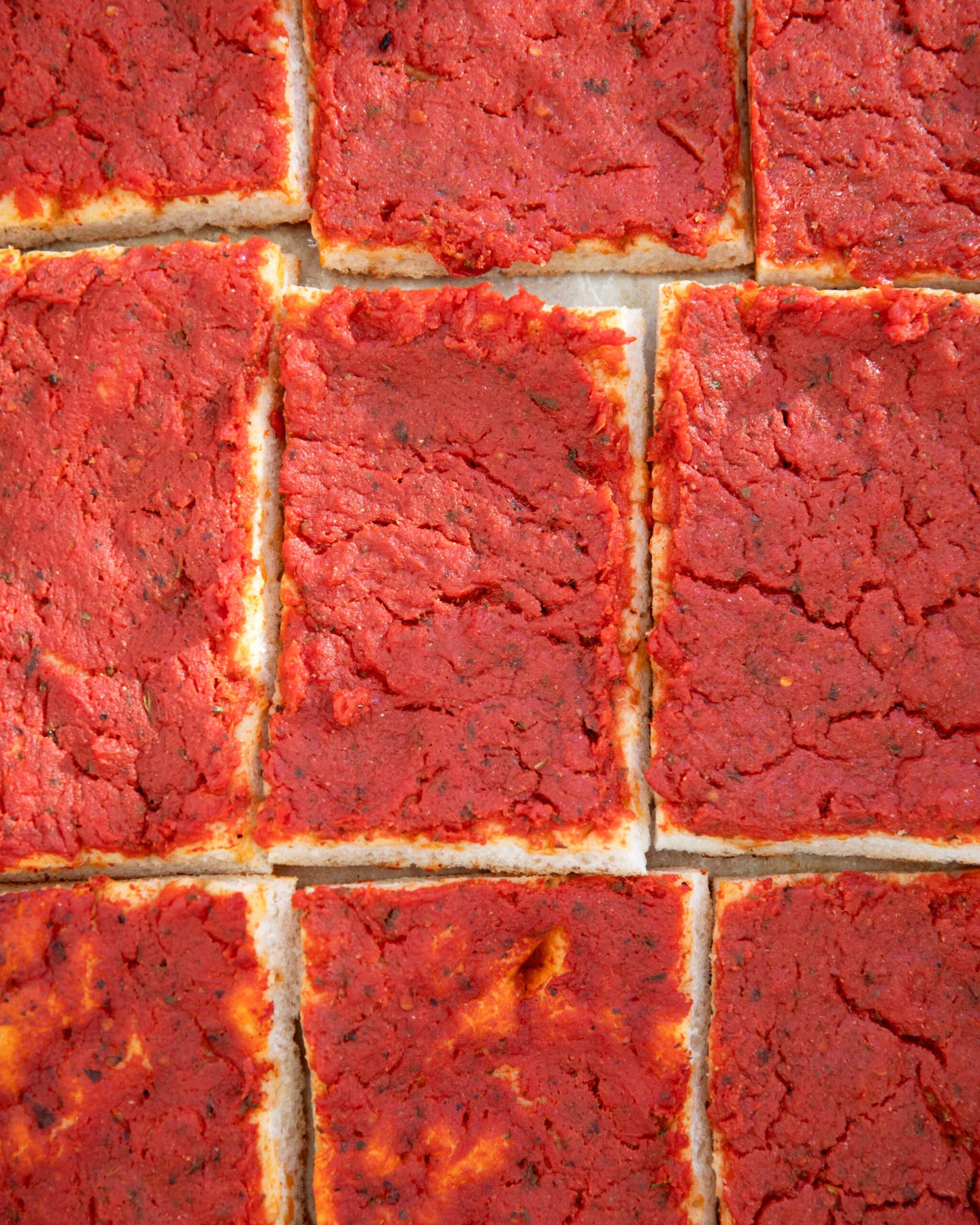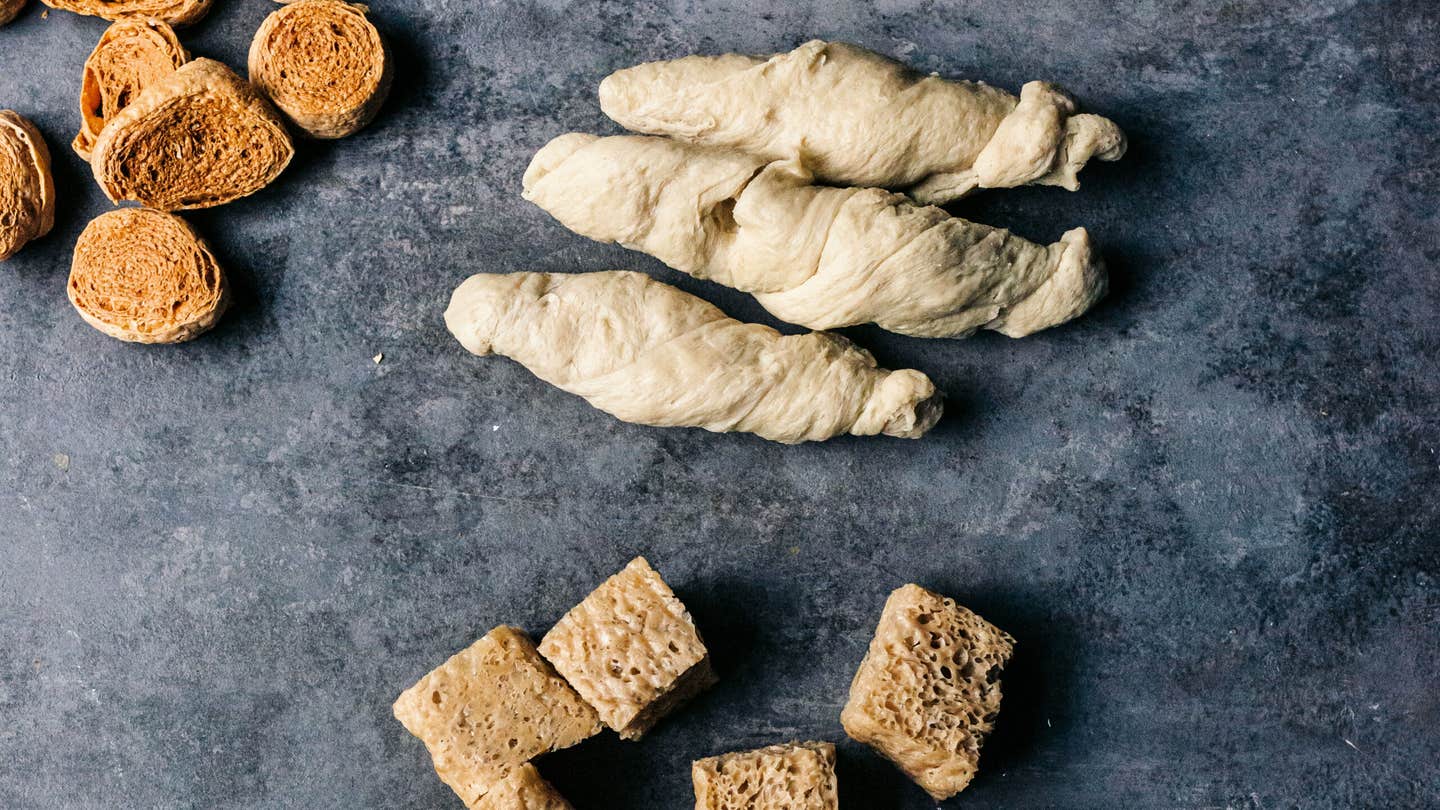
How to Make Seitan
A step-by-step guide on preparing the Chinese meat alternative, with expert guidance from Hannah Che, author of The Vegan Chinese Kitchen.
This story is brought to you by SAVEUR Cookbook Club, our passionate community of food-loving readers from around the globe celebrating our favorite authors and recipes. Join us as we cook through a new book every two months, and share your food pics and vids on social media with the hashtags #SAVEURCookbookClub and #EatTheWorld.
In China’s vegetarian cuisine, some dishes include ingredients that look uncannily like meat. But they aren’t animal products at all—rather, they’re most likely a soybean-based food, such as tofu, or they’re made from gluten, also known as seitan (a moniker of Japanese origin that has become a common term for the ingredient), or in Chinese as mianjin. Centuries ago, Chinese cooks began rinsing wheat flour-based dough to wash out the starch and leave behind gluten, the primary protein in wheat. Seitan’s stringy, chewy texture has made it a popular alternative to meats like chicken and duck, and a common addition to Chinese dishes like hot pot, stir fries, and stews. Over time, many other cultures have adopted the ingredient into their own food traditions as a nourishing protein source.
Throughout history, China’s imitation meats have played an especially important role in the country’s Buddhist practices. As Hannah Che, author of The Vegan Chinese Kitchen, told us in a recent Q&A, “In Chinese culture, dishes can be highly symbolic—chicken or fish might represent prosperity or good luck. Monasteries want guests to feel welcome and honored, and so present them with elaborate and symbolic dishes that guests would be familiar with, just without the animal products.” In her cookbook, Che teaches us how to make seitan from scratch. In this how-to guide, we outline the steps, illustrating how easy it can be to make a pound of hearty, delicious plant-based protein from just three staple ingredients. (Note that the seitan should be cooked—usually by poaching or frying—before being incorporated into dishes.)
What you need:
Adapted with permission from The Vegan Chinese Kitchen by Hannah Che © 2022. Photographs by Hannah Che. Published by Clarkson Potter, a division of Penguin Random House, LLC.
BEFORE YOU BEGIN
Assemble your ingredients and equipment. Note that Che recommends using all-purpose flour because it tends to be affordable and widely available. However, you can also substitute bread flour, which has a higher protein content and will yield slightly more gluten.
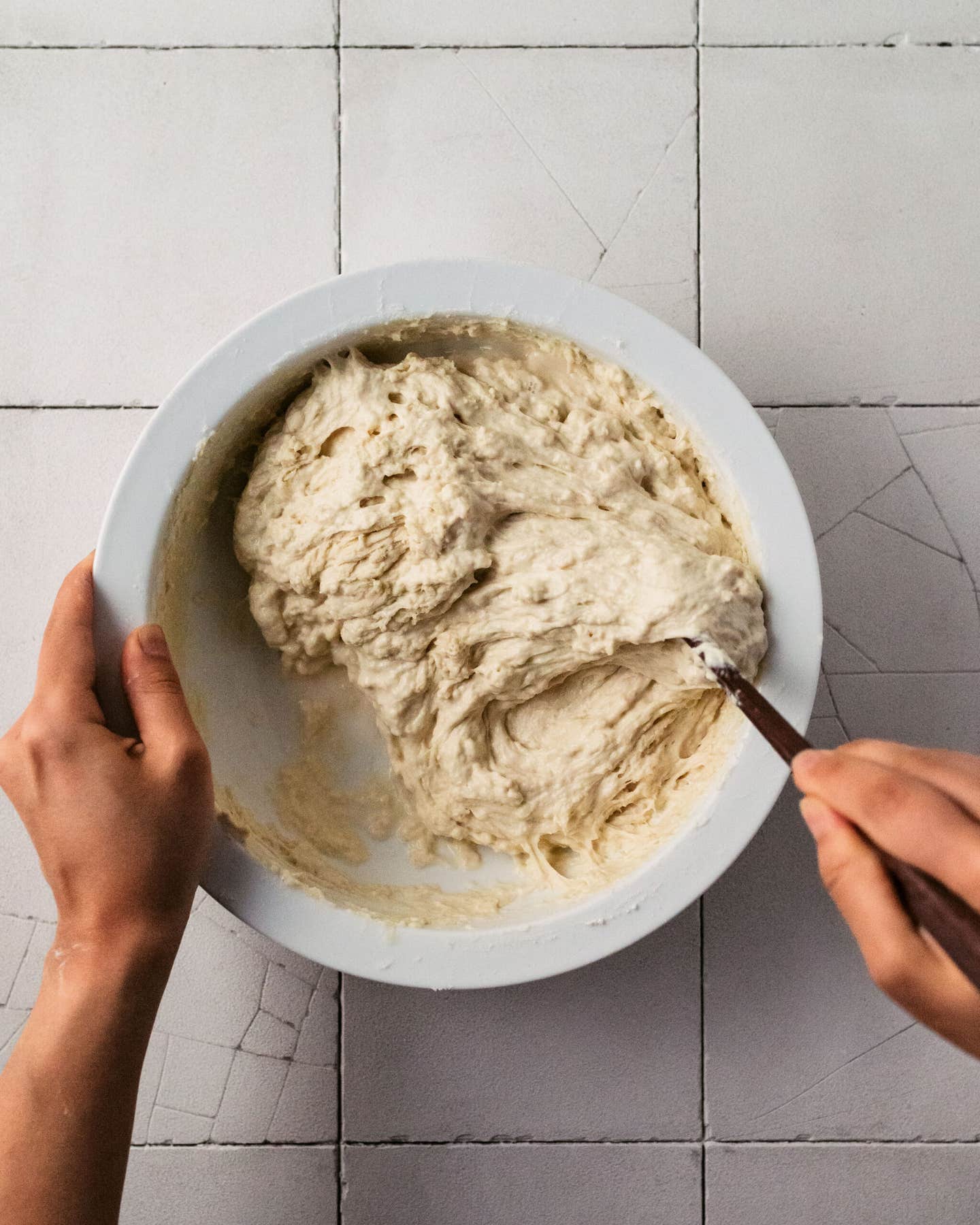
STEP 1: Make the dough.
Pour 9 cups (1,125 g) of all-purpose flour into a large bowl. In another bowl, dissolve ¾ teaspoon of kosher salt in 3¾ cups of lukewarm water. Pour the salted water into the flour and use a pair of chopsticks or a wooden spoon to stir in one direction until you can’t see any remaining streaks of dry flour. Continue to stir vigorously to allow the gluten strands to form, scraping down the sides of the bowl with a spatula as needed, for about 4 minutes. At this point, the dough will be very tacky and sticky.
Cover the dough and let it rest for 2 hours so the gluten can develop. You can also leave it overnight: just cover and put the dough in the refrigerator, for up to 24 hours. If refrigerating, let the dough come back to room temperature before moving on to the next step.
STEP 2: Prep the dough for washing.
Place a large empty bowl in the sink (to prevent splashing) and another large empty bowl on the counter. Set a fine-mesh sieve over the bowl on the counter (this is where you’ll pour the starchy water).
Using chopsticks, give the rested dough a good stir in the bowl. It should be very stretchy, smooth, and satiny. Scrape the mass of dough into the large bowl in the sink. Cover with about 3 cups lukewarm water. (Don’t use cold water, which will make it more difficult to break down the starch.)
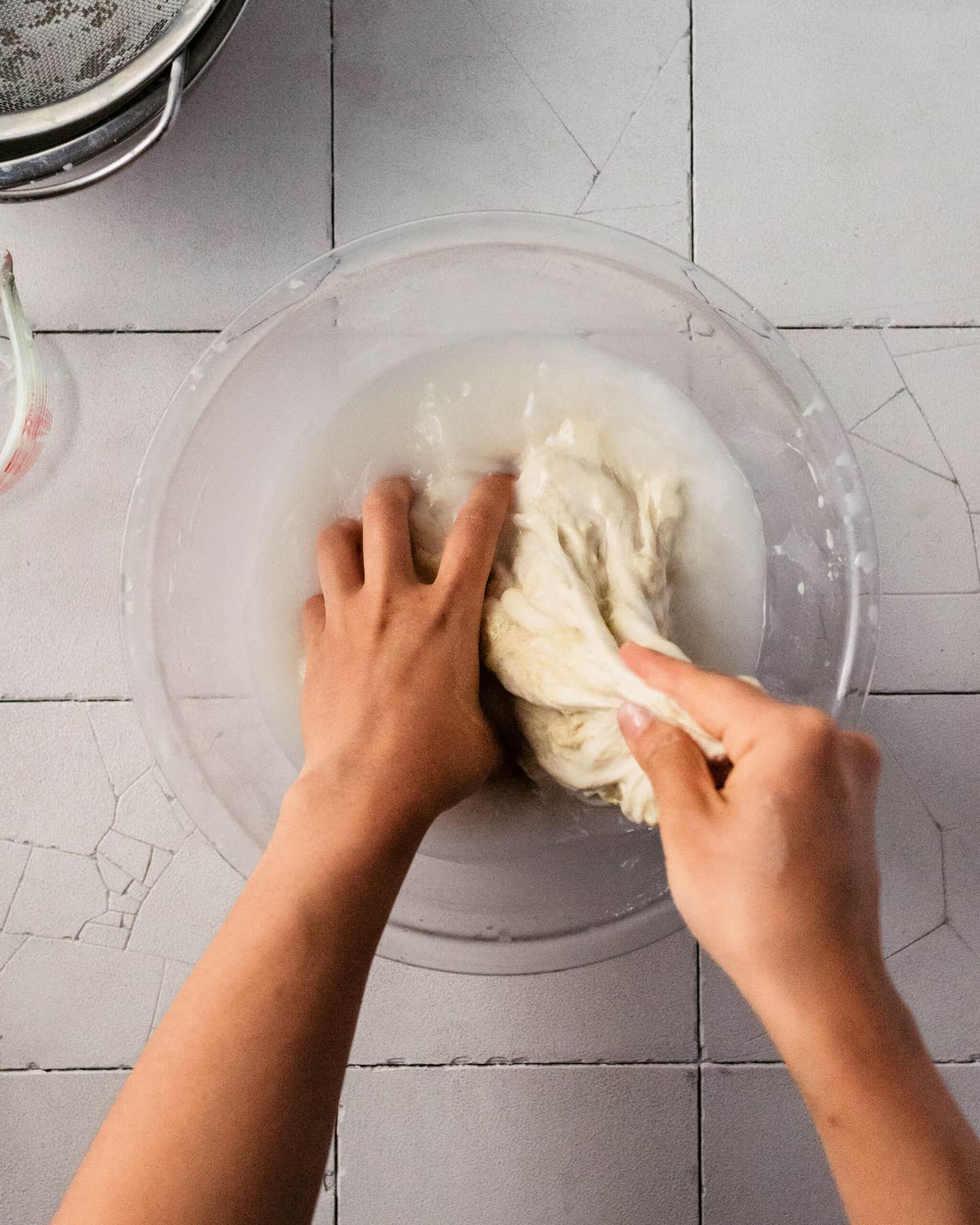
STEP 3: Wash the gluten.
Using your hands, knead the slippery mass in the bowl. As the starch separates from the gluten, the water will become cloudy. “Wash” the dough by stretching the strands under the water and squishing them to release more starch.
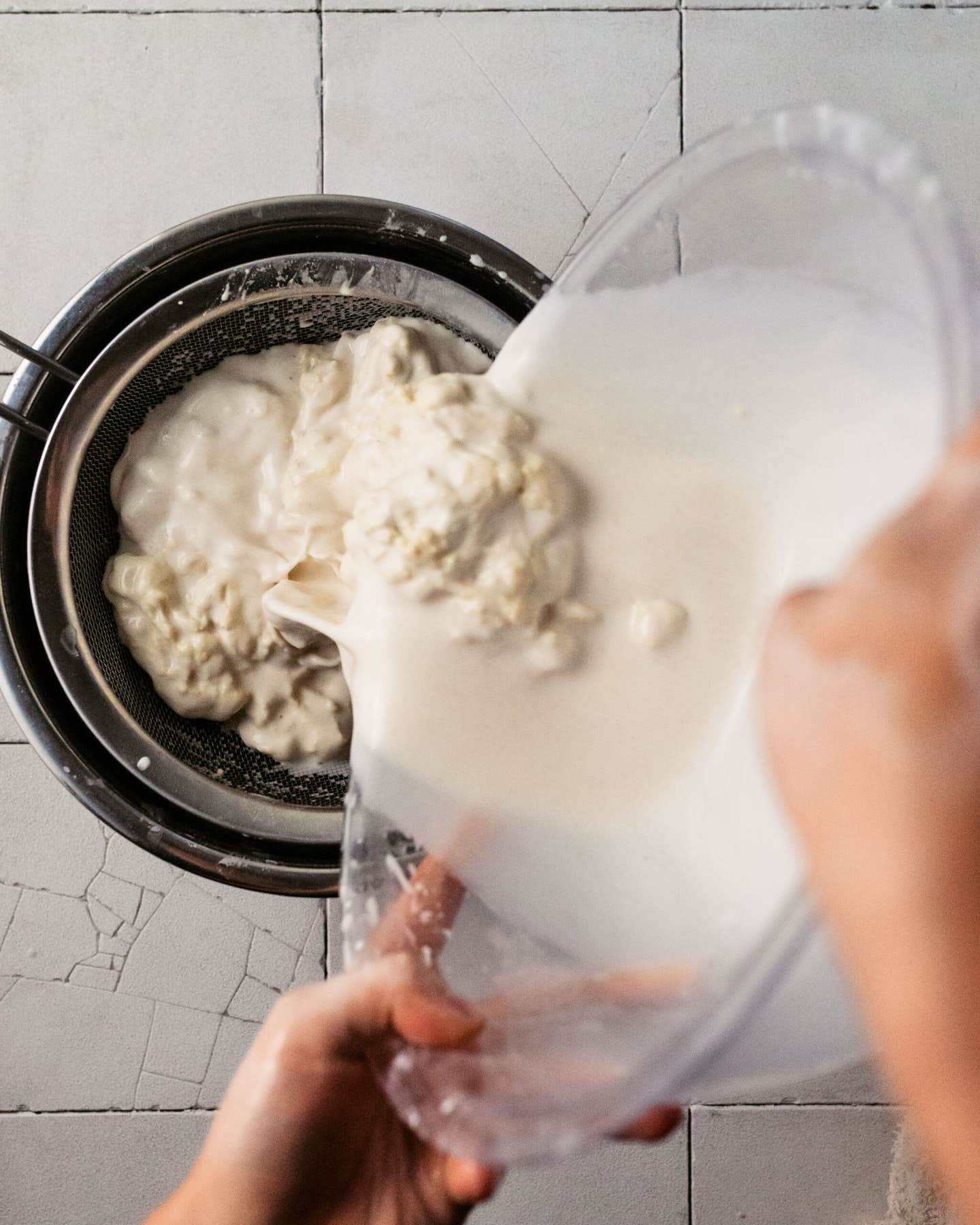
Continue washing the dough for about one minute, then lift the dough from the water and pour the water through the sieve into the empty bowl. Place the dough back in its bowl and set it back in the sink; remove any bits of dough caught in the sieve and combine them with the dough in the sink.
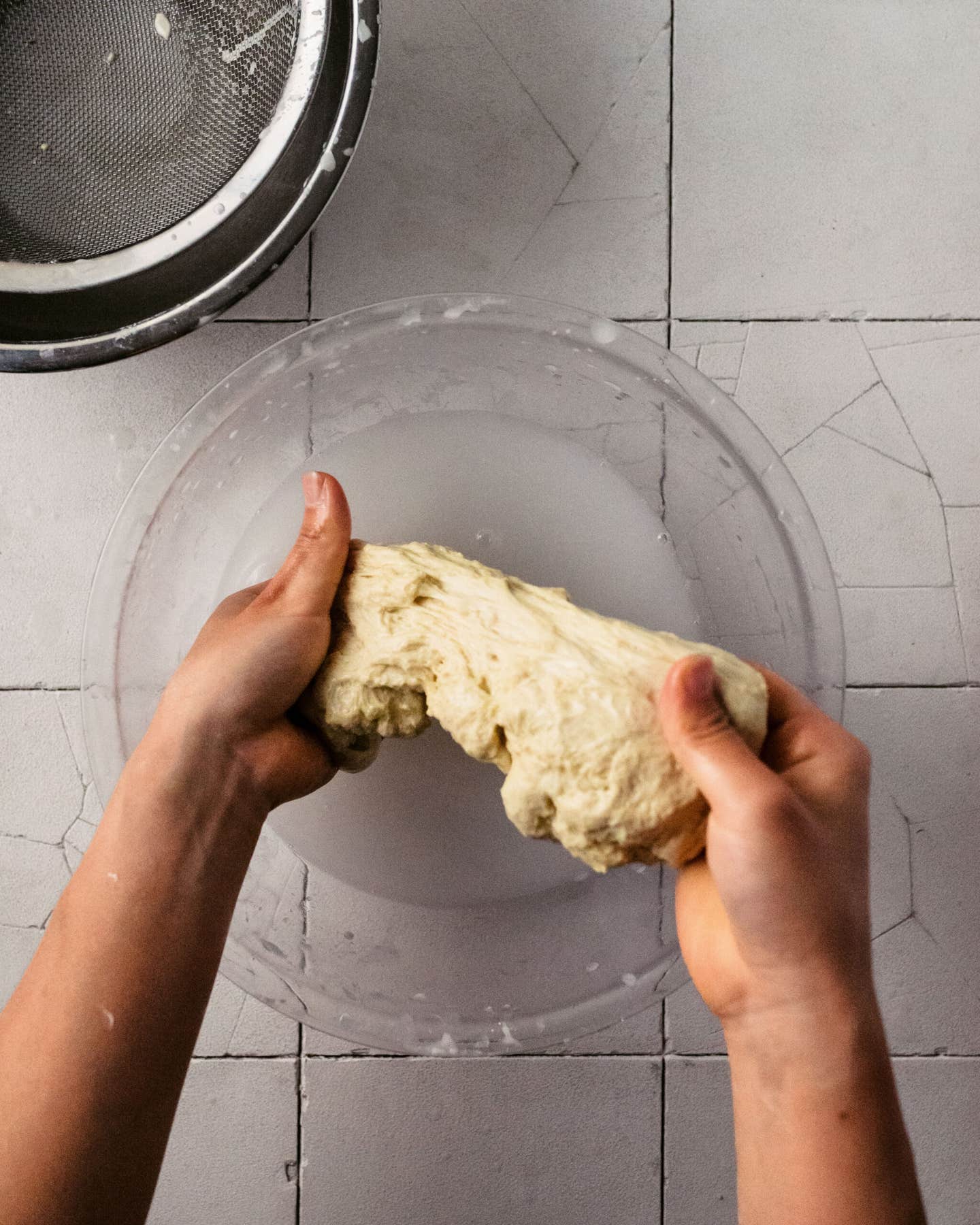
STEP 4: Repeat.
Repeat the above step of washing and stretching the dough four more times. Each time, add new lukewarm water to the bowl, and continue washing and stretching. The dough will become looser and stretchier as the starch washes away. By the third or fourth wash, the dough will feel less slimy. Bring any loose bits together to form a cohesive, stretchy ball. After the fifth wash, simply discard the water rather than pouring it into the bowl on the counter, as there will be very little starch left. (Don’t worry if the last portion of water doesn’t run clear; it will be a lot more translucent than when you started, but still a little murky.) The mass of dough, which is the gluten, should now be beige and rubbery, with a texture reminiscent of chewing gum. Che recommends keeping the starchy water for watering plants; otherwise, discard.
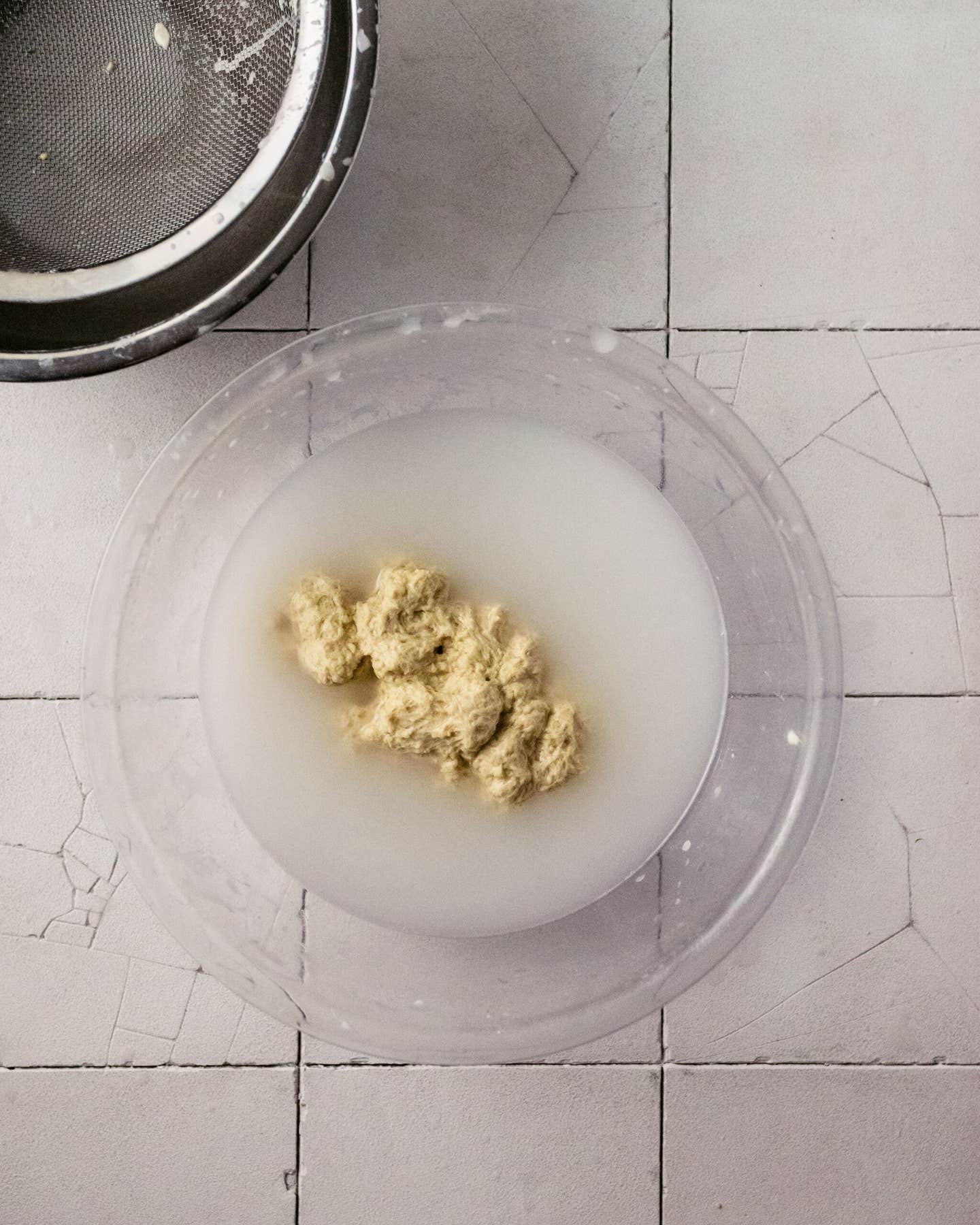
STEP 5: Let the seitan rest.
Place the mass of seitan into a clean large bowl and cover with cool water. Leave uncovered to rest for at least 1 hour, then pour off the water. The seitan is now ready to use. It’s best to cook it the same day, but you can also refrigerate it, covered in water, overnight or up to 12 hours. Once it’s cooked, store in an airtight container in the refrigerator and use within two days, or freeze for up to three months.
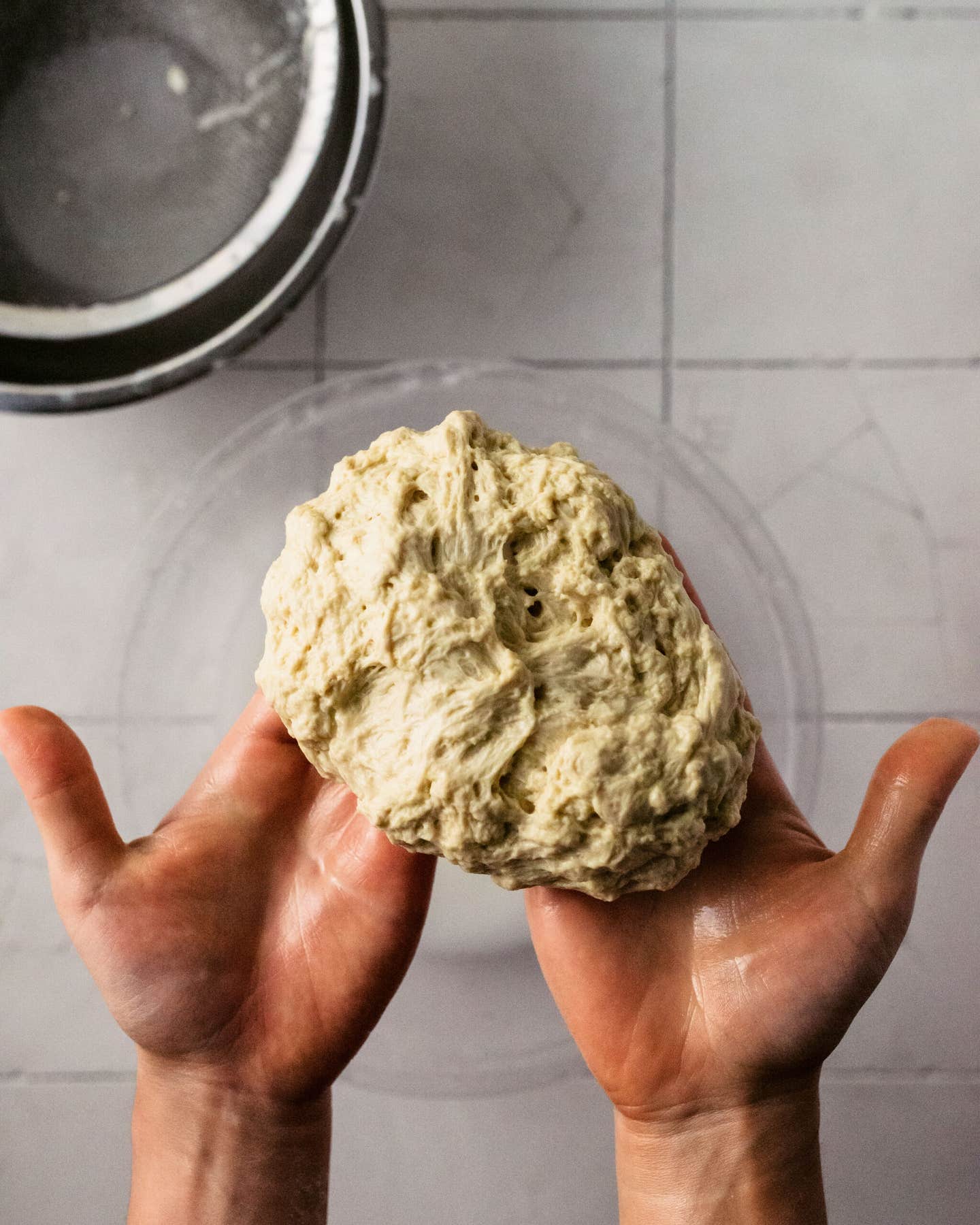
Final Thoughts
Though seitan by itself does not have much flavor, it does an excellent job of absorbing any sauces or seasonings you might throw at it. That’s what makes it such a popular ingredient in Chinese cooking, particularly as a meat alternative. Using fresh gluten as a starting point, countless tasty possibilities lie before you: You can fry balls of seitan into seitan puffs (known in Chinese as youmianjin), wrap the seitan around chopsticks and poach them (mianchang), or even add yeast to make raised gluten (kaofu). You can also experiment with using seitan as a main protein in all sorts of plant-based dishes: Blitz cooked seitan in a food processor to produce a texture reminiscent of ground meat (ideal for dumplings, meatballs, or sausages), tear it into shreds to make a taco or burrito filling, or slice it into thin pieces to layer on a sandwich. If you're new to seitan, it'll become clear before long that it is as adaptable as it is filling, nutritious, and satisfying to eat.
Keep Reading
Continue to Next Story









